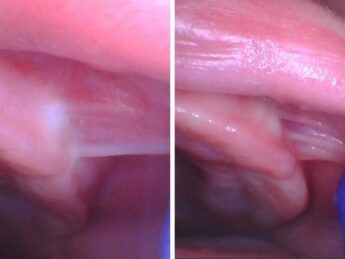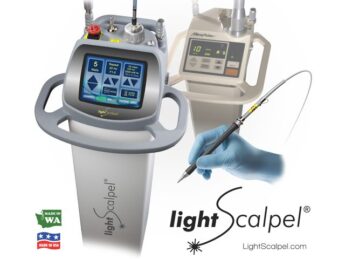LightScalpel has returned from the Academy of Laser Dentistry 2015 meeting that took place on Feb. 5-7 2015 in Palm Springs, CA. Co-authored by Drs. Cobb, Kaplan, Levine, Linden, Nordquist, Selig and our own Peter Vitruk, a total of seven lectures were presented on the subjects of CO2 laser-assisted treatments in Periodontics and Implant Dentistry, Pediatric and Special Needs Dentistry, as well as Laser-Tissue Interaction Physics.
On 2/5, Grant Selig, DDS, and Peter Vitruk, PhD, presented “Implant Placement Surgeries Utilizing SuperPulse 10.6 micrometers CO2 laser”.
The presentation covered several areas of utilizing the dental CO2 laser in Implant surgery: socket preservation; the extraction site “sterilization” prior to the placement of the graft material; flapless entry surgery and full flap dissection for implant placement; bleeding reduction for medically compromised patients (patients with bleeding disorders); and the positive reduction of local anesthetic.
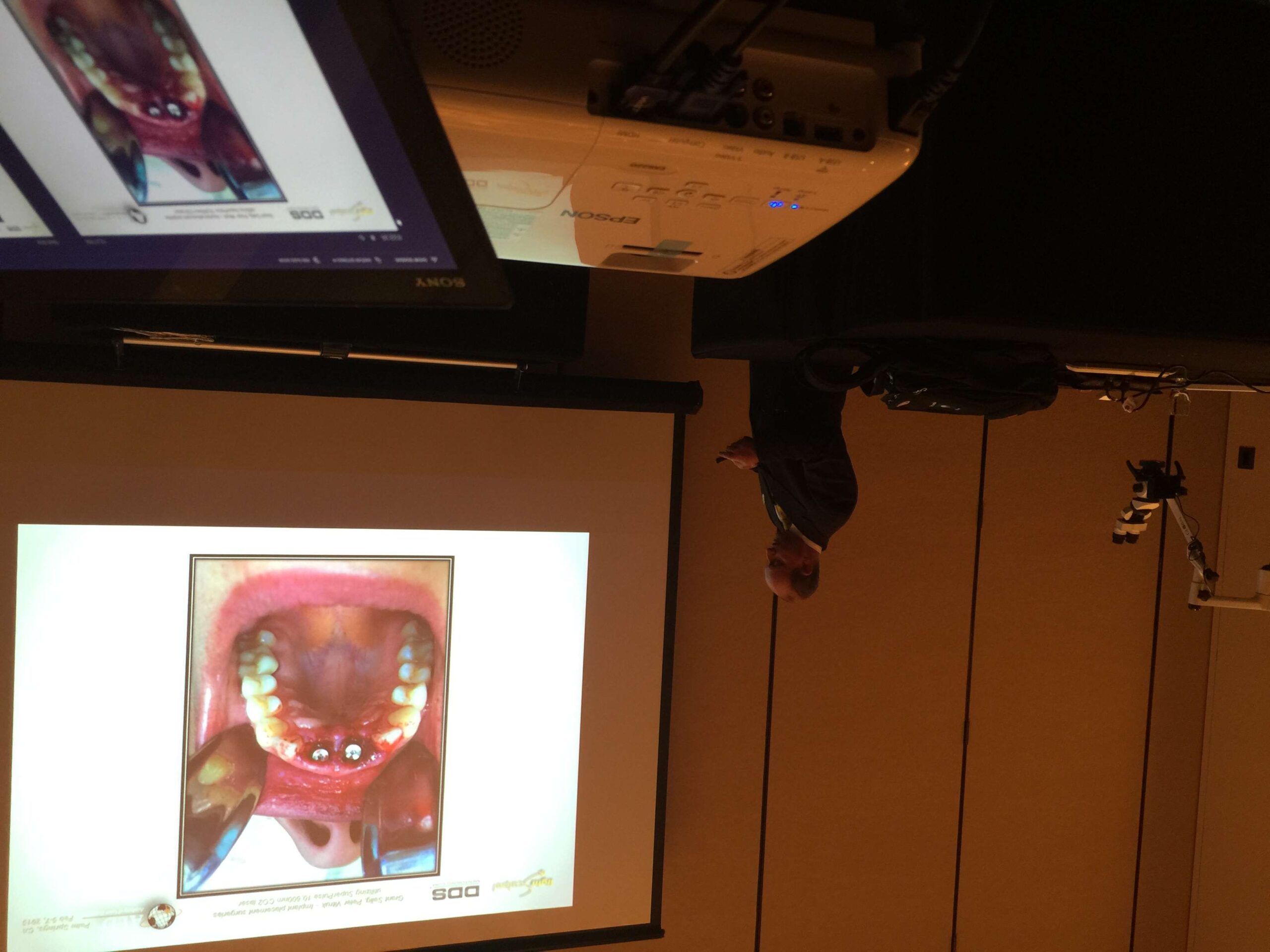 Dr. Grant Selig talking about one of his cases Dr. Grant Selig talking about one of his cases | 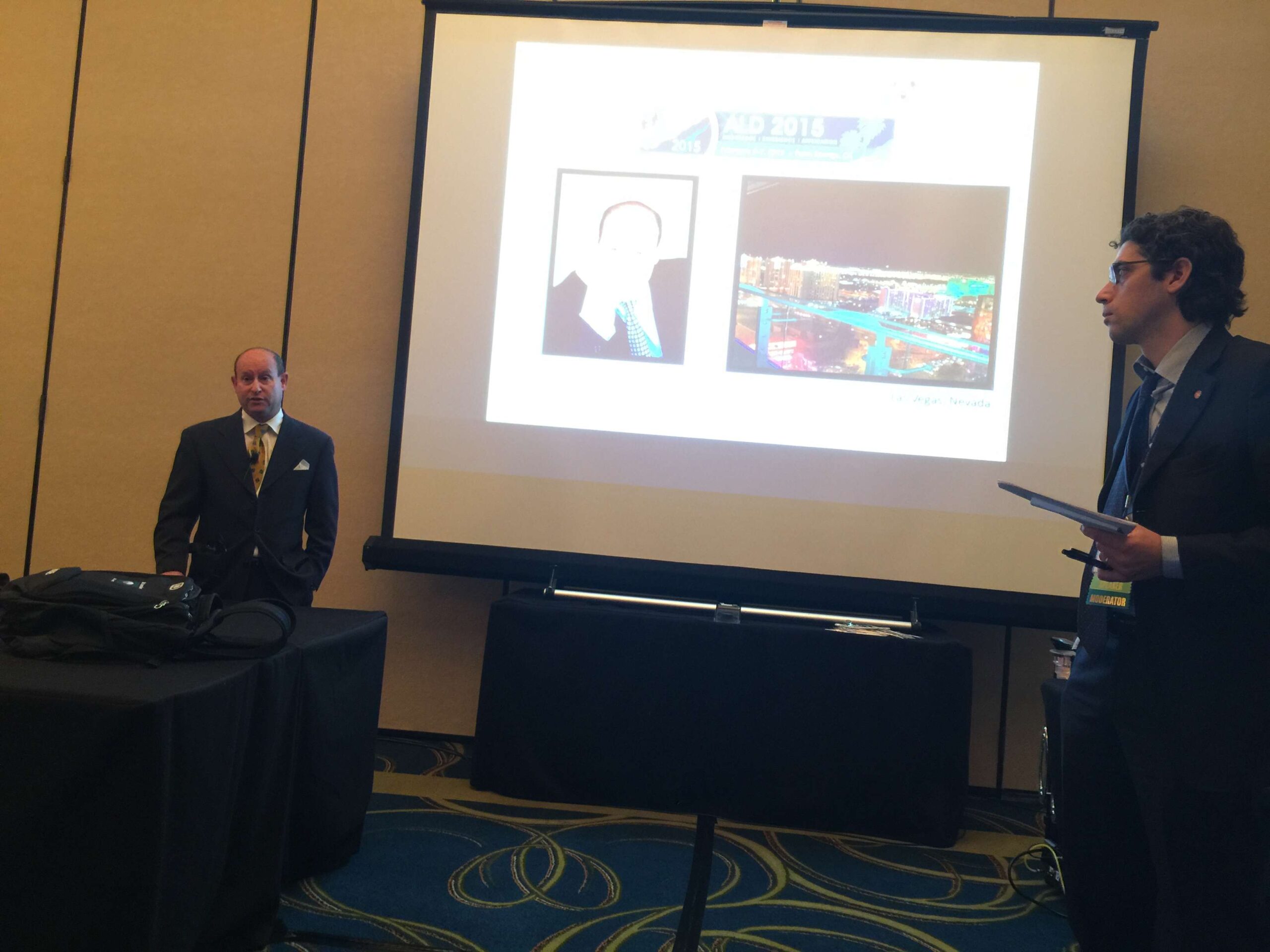 Dr. Grant Selig (left) answering a question from the panel mediator, Dr. Umberto Romeo. Dr. Grant Selig (left) answering a question from the panel mediator, Dr. Umberto Romeo. |
On 2/6, Martin Kaplan, DMD, and Peter Vitruk, PhD, presented the CO2 dental laser applications in pediatric dentistry: “Infant Frenulectomies with SuperPulse 10.6 micrometers Dental CO2 Laser LightScalpel LS-1005”.
A breastfeeding can be difficult for the infant and painful for the mother because the lip- or tongue- ties limiting the movement and preventing the infant from properly latching on and drawing milk from the breast. If left untreated, it can eventually impair the child’s speech and proper tooth alignment. Lip-tie and tongue-tie can be corrected by laser frenectomy with numerous benefits, such as: elimination of sutures, no bleeding, no sedation nor anesthetics. SuperPulse dental CO2 laser allows for fast and predictable, char free lip-tie and tongue-tie removal in infants that are highly mobile and impatient – results that are unobtainable with the other groups of wavelengths.
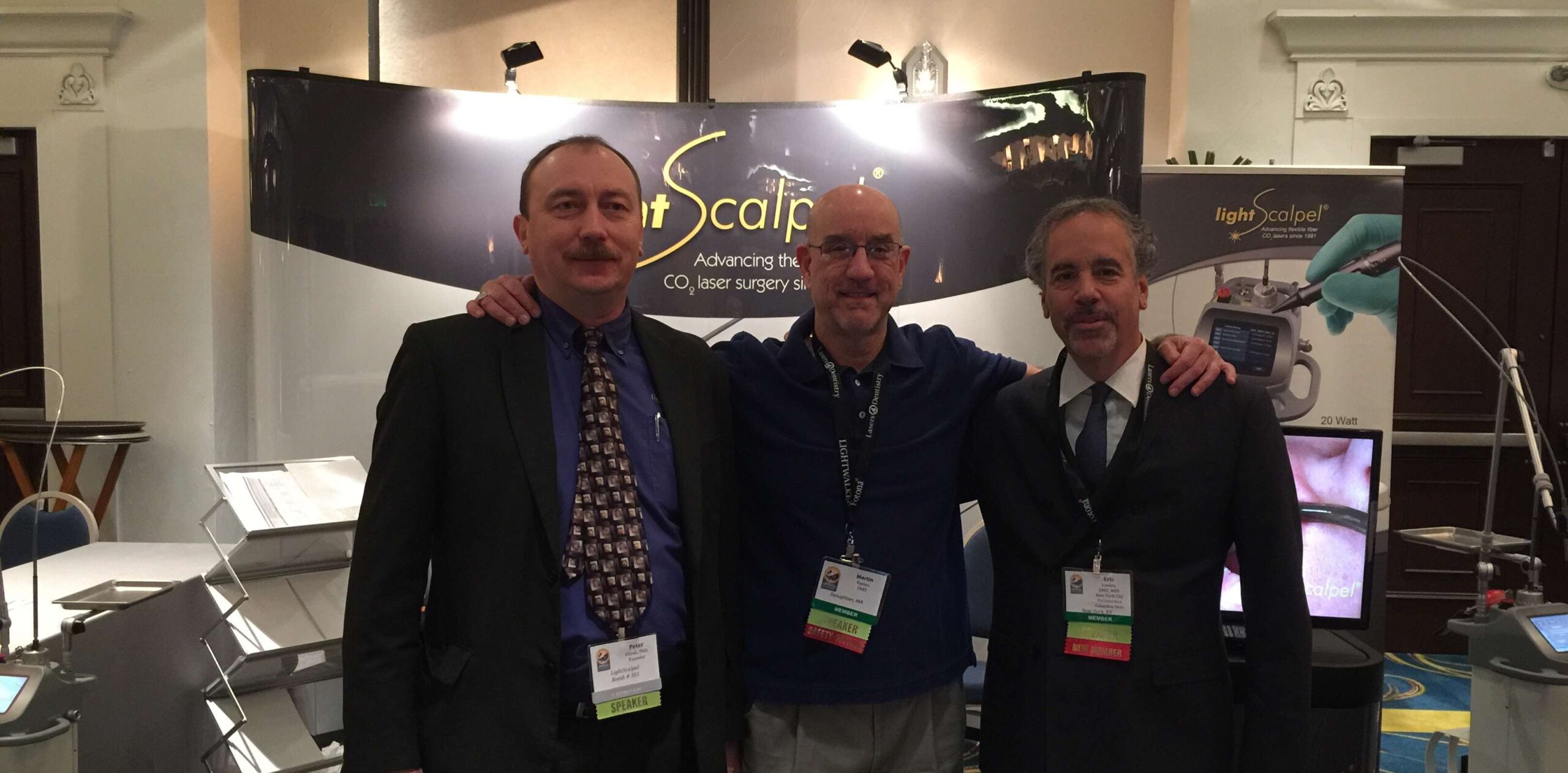 |
| L-to-R: Peter Vitruk, PhD, Martin Kaplan, DMD, and Eric Linden, DMD, MSD, at the LightScalpel booth between scientific sessions at the ALD annual convention. |
On 2/7, Eric Linden, DMD, MSD, and Peter Vitruk, PhD, gave a presentation on the use of the CO2 laser for treating periodontitis: “SuperPulse 10.6 micrometers CO2 Laser-Assisted Soft Tissue Procedures in Periodontics”.
The lecture covered the following subjects: pocket disinfection; epithelial ablation (clinical assumption based on the physics and understanding of the target); reduction of clinical inflammation; and decrease in bleeding. Many of the above are in conjunction with either an open flap , closed PD, and oral antibiotic adjunctive therapy.
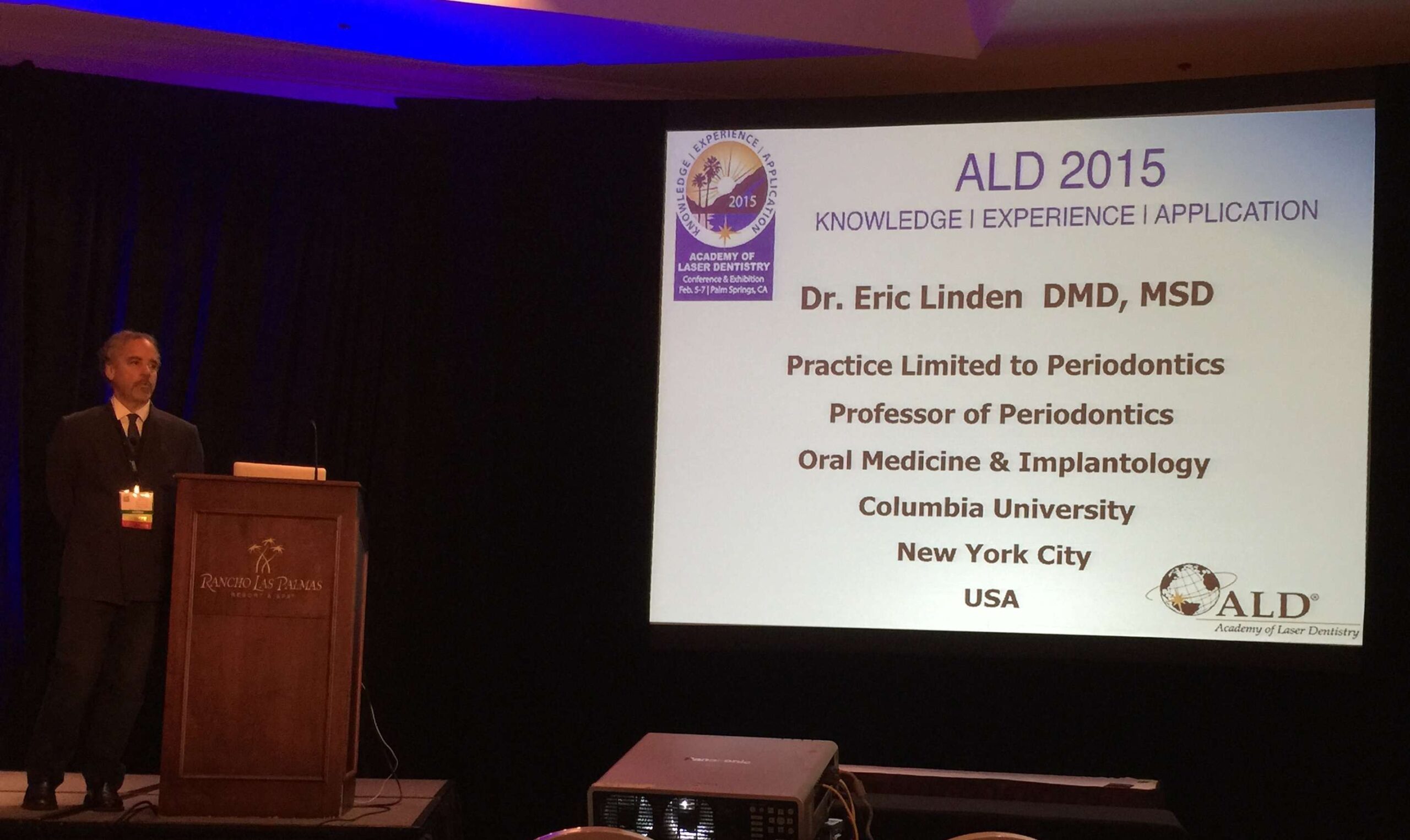 | 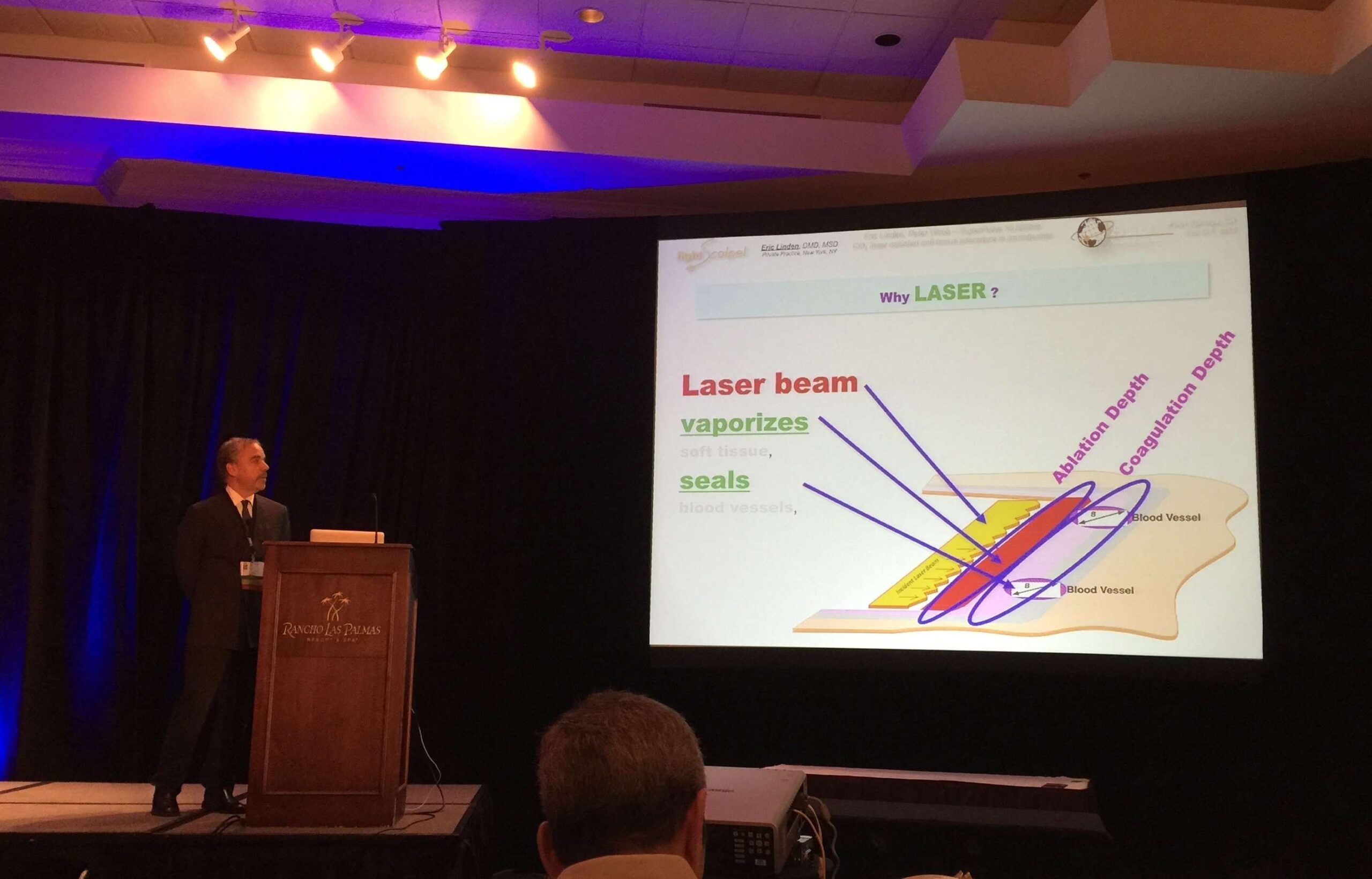 |
| Dr. Eric Linden starts his presentation on using the dental laser in the treatment of periodontitis | Dr. Eric Linden talks about talks about periodontal surgeries with the LightScalpel laser |
On 2/7, the presentation by Charles Cobb, DDS, MS, PhD, and Peter Vitruk, PhD, “Microbial Decontamination of Three Different Implant Surfaces Using a Superpulse CO2 (10.6 micrometers) Laser: An in-Vitro Study” outlined the concept of laser ablation of bacterial biofilms.
 Charles M. Cobb, DDS, MS, PhD Charles M. Cobb, DDS, MS, PhD | 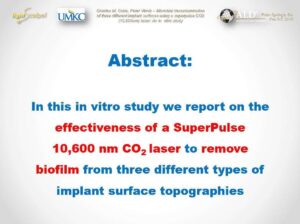 Abstract Abstract |
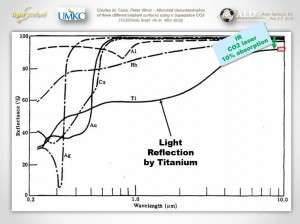 The absorption of the CO2 laser wavelength by titanium implants is at the minimum. The absorption of the CO2 laser wavelength by titanium implants is at the minimum. |  CFU counts of bactericidal efficiency are confirmed by SEM observations. CFU counts of bactericidal efficiency are confirmed by SEM observations. |
The study concludes that the superpulse 10.6 micrometers wavelength CO2 laser may provide a predictable method of surface decontamination in the treatment of periimplantitis.
On 2/7, William D. Nordquist, DMD, MS, presented “Efficacy of the CO2 Laser to Sterilize and Ablate Bacterial Laded Epithelial Lining of the Diseased Gingival Sulcus”.
The study demonstrated that SuperPulse 10.6 micrometers CO2 laser radiation is proven to be an efficient ablation tool for the removal of microbially contaminated epithelial lining of diseased gingival sulcus.
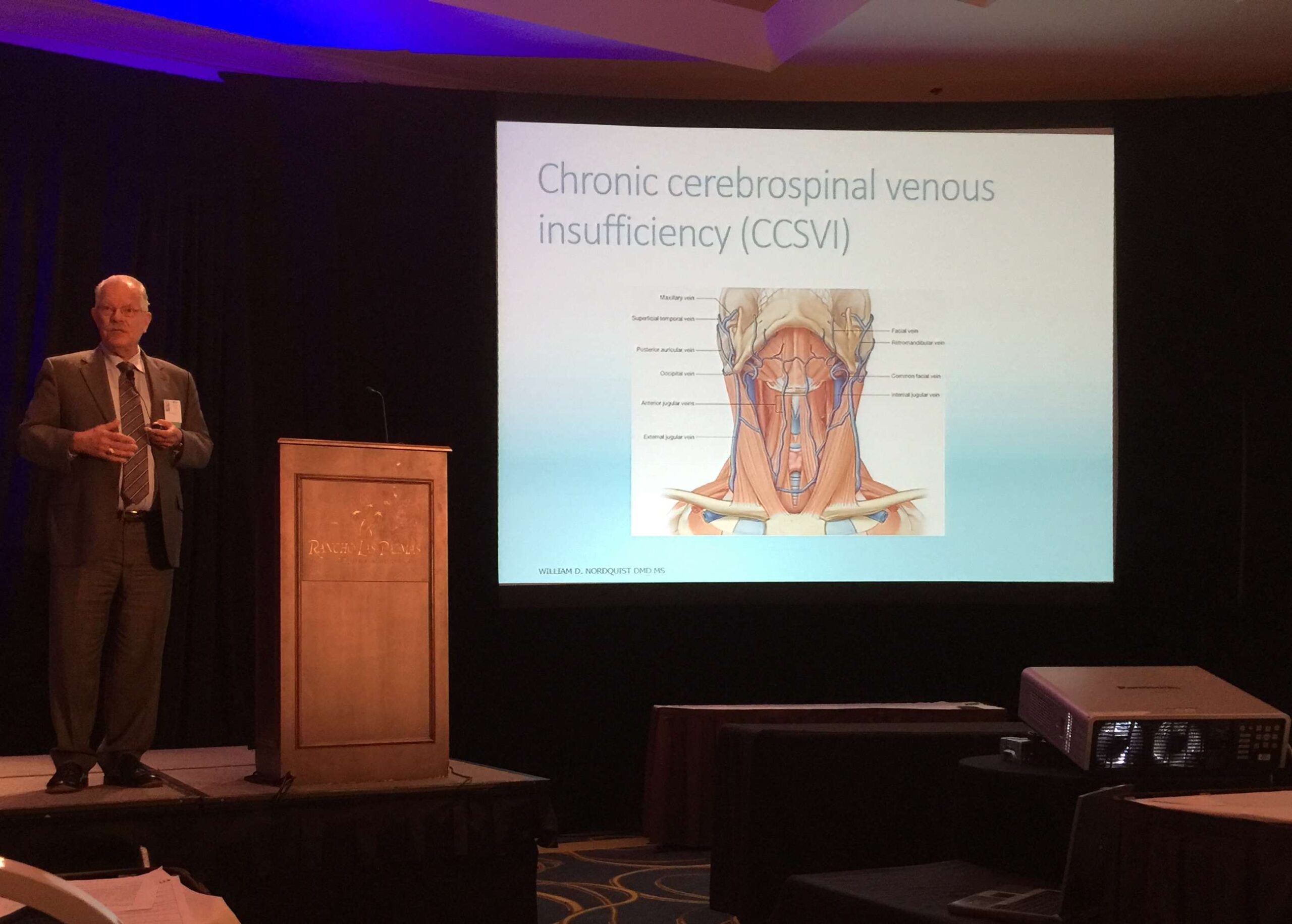 Dr. Nordquist giving his lecture on the efficacy of the dental CO2 laser in periodontics Dr. Nordquist giving his lecture on the efficacy of the dental CO2 laser in periodontics | 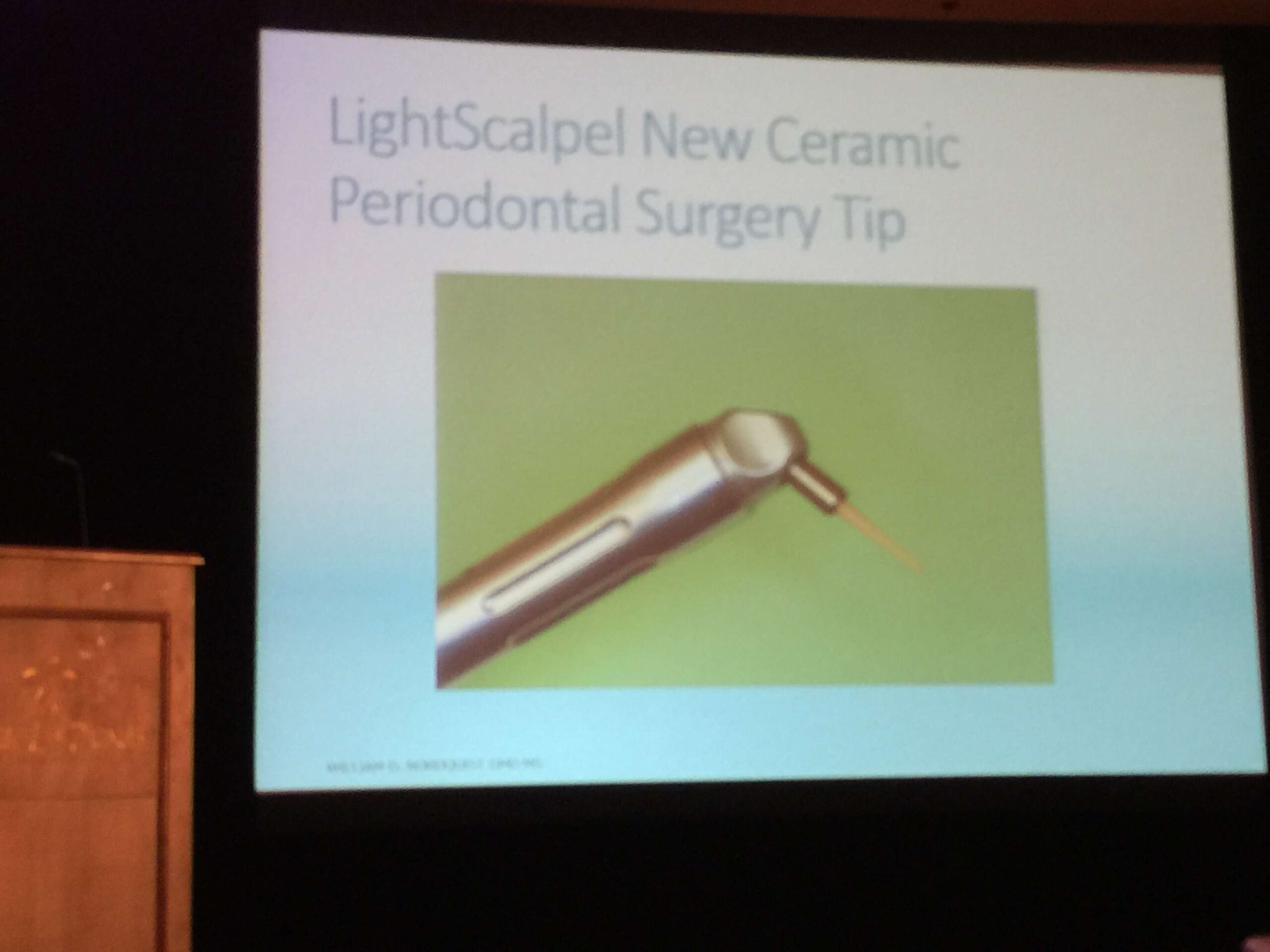 The LightScalpel Perio Tip was the STAR of Dr. Nordquist’s lecture The LightScalpel Perio Tip was the STAR of Dr. Nordquist’s lecture |
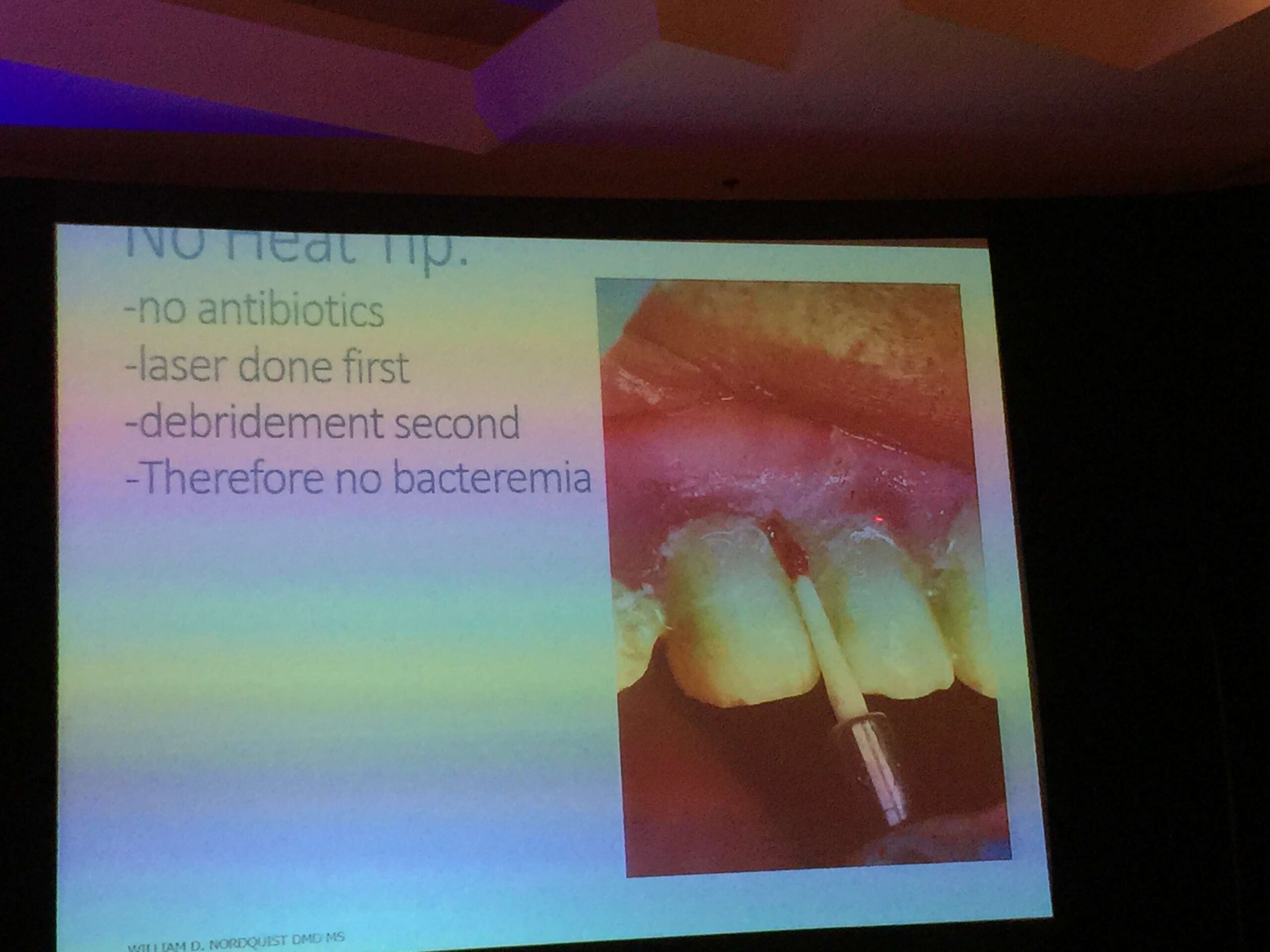 The LightScalpel Perio Tip at work The LightScalpel Perio Tip at work |  Microscopic photo shows the evidence of the efficacy of the Superpulse Dental CO2 laser in removing the epithelial lining of the diseased gingival sulcus. Microscopic photo shows the evidence of the efficacy of the Superpulse Dental CO2 laser in removing the epithelial lining of the diseased gingival sulcus. |
On 2/7, Robert Levine, DDS, and Peter Vitruk, PhD, presented the soft-tissue dental laser applications in the area of special needs dentistry (lecture title – “Laser-Assisted Dental Procedures Utilizing the LightScalpel LS- 1005 SuperPuse 10.6 micrometers CO2 Laser in the Area of Special Needs Dentistry”).
The special needs dentistry encompasses a much greater dynamic than just patients with developmental disabilities or cognitive impairments. With the patient population extending into age group of 75-90 due to improvements in medical care, dentists are treating a geriatric population with many different medical conditions (e.g., patients I&R, A1C, etc.). This group of patients can now be treated safely and efficiently utilizing the SuperPulse dental CO2 laser technology and the benefits that it brings: (1) char-free soft tissue removal and coagulation; (2) predictable depth and width of tissue removal or coagulation.
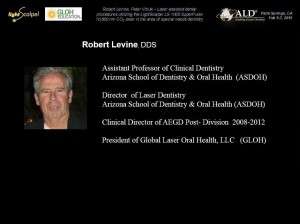 Robert Levine, DDS Robert Levine, DDS |  Dr. Levine beginning his lecture at the ALD 2015 Dr. Levine beginning his lecture at the ALD 2015 |
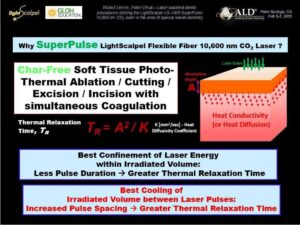 SuperPulse CO2 laser minimizes thermal damage SuperPulse CO2 laser minimizes thermal damage | 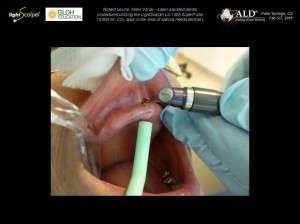 LightScalpel dental CO2 laser frenectomy |
On 2/7, the presentation of our CEO Peter Vitruk, PhD, MInstP, CPhys, called “Myths and Physics of Soft Tissue Dental Lasers”
consisted of both the original research and literature review. The lecture examined widely proliferated myths and misconceptions about soft tissue dental lasers, and discussed in detail the physics of laser-tissue interaction.
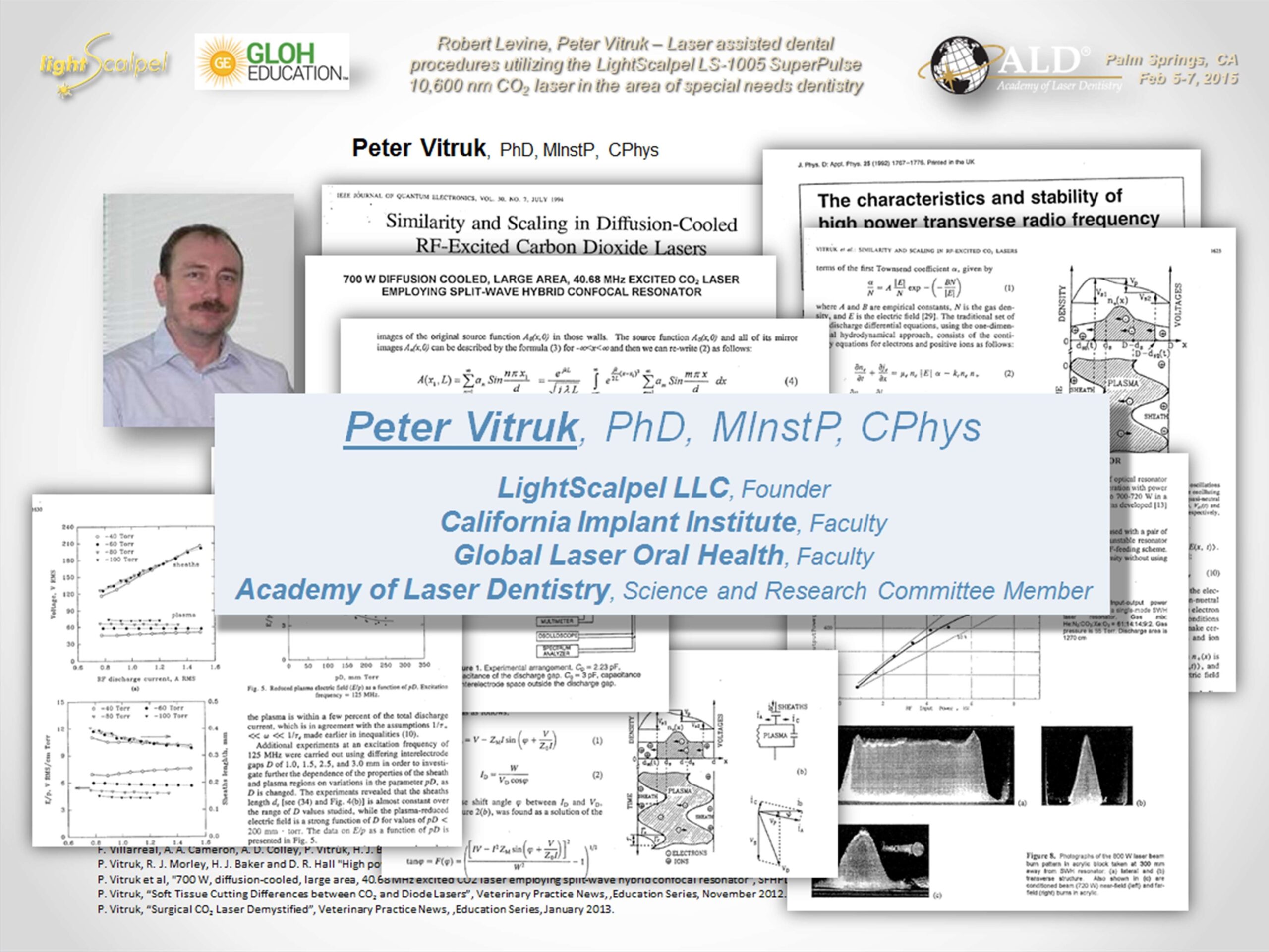 Peter Vitruk, PhD, MInstP, CPhys Peter Vitruk, PhD, MInstP, CPhys |  Absorption Spectra for Main Chromophores Absorption Spectra for Main Chromophores |
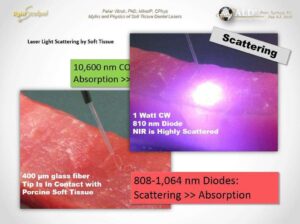 Near-IR light scattering by soft tissue Near-IR light scattering by soft tissue | 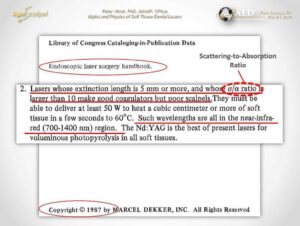 Not all laser wavelengths are equally good at both cutting and coagulating soft tissue Not all laser wavelengths are equally good at both cutting and coagulating soft tissue |
